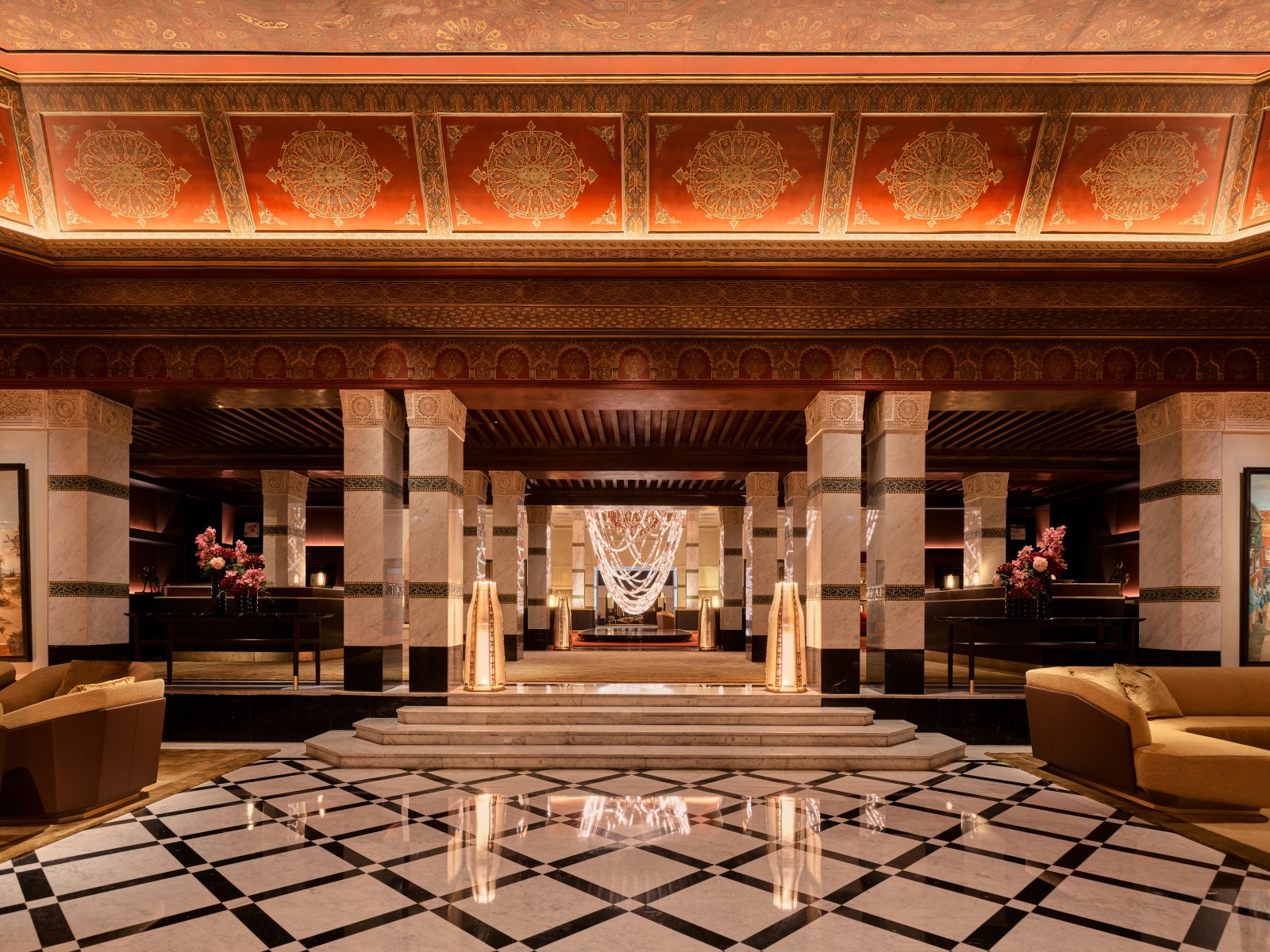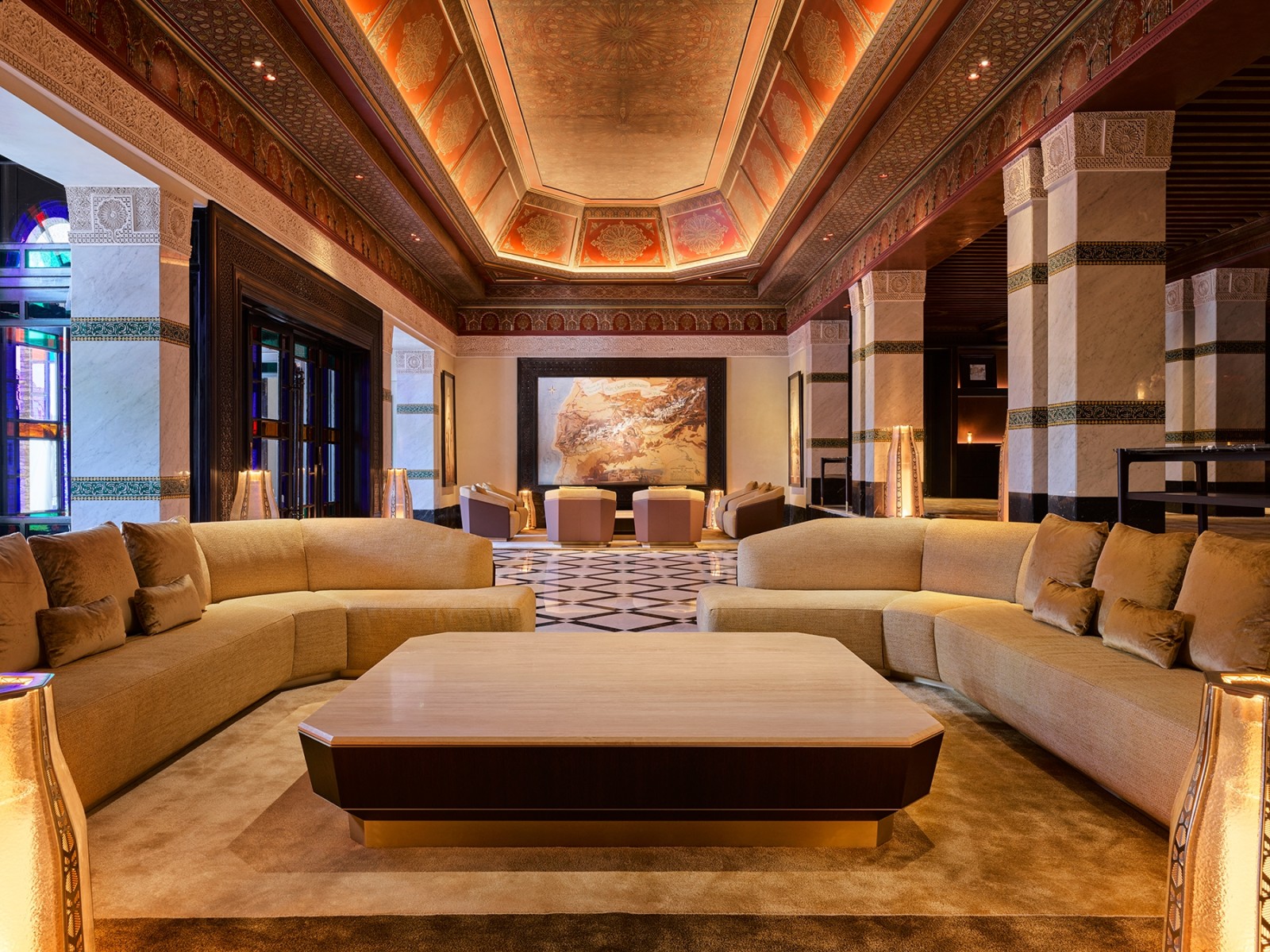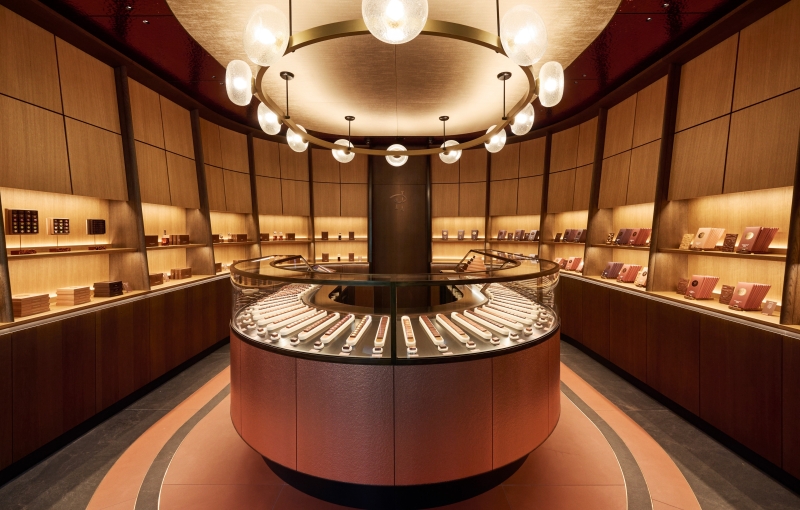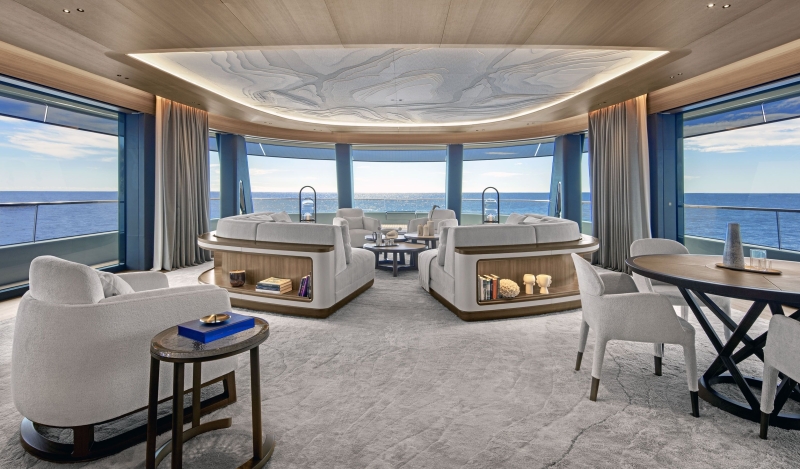Other design intentions include creating stronger links to the lush vegetation of La Mamounia's legendary 37-acre garden and the integration of Moroccan crafts. Traditional materials like hammered metal and embossed leather were incorporated, rugs manufactured locally, and references to vernacular jewelry and furniture embraced.
The result is a series of spaces, each designed to have its own distinct personality, but also to compose a harmonious whole. Some were intended to provide dramatic visual fireworks; others more subdued, intimate moments. Their functions have been redefined or enhanced, providing a place for every mood, every time of day, every occasion, and every guest. Upon arrival, visitors are immediately greeted by the elaborate façade of the main entrance, with its mosaics and painted frescoes now illuminated by a series of new openwork brass pendants and lanterns that look as if they have always been in place, their moucharabieh-like motifs created using chemical etching techniques to endow them with greater finesse.
As soon as the doors open, you immediately catch a glimpse of the gleaming Centenary Chandelier in the background. First, however, you pass through the lobby with its low-key look and two separate seating areas, one grouped around a fireplace, the other arranged in front of a large map of Africa. The hues are gentle and light, the finely crafted furniture clad in a combination of smooth leather, fabric, and brass.


































































